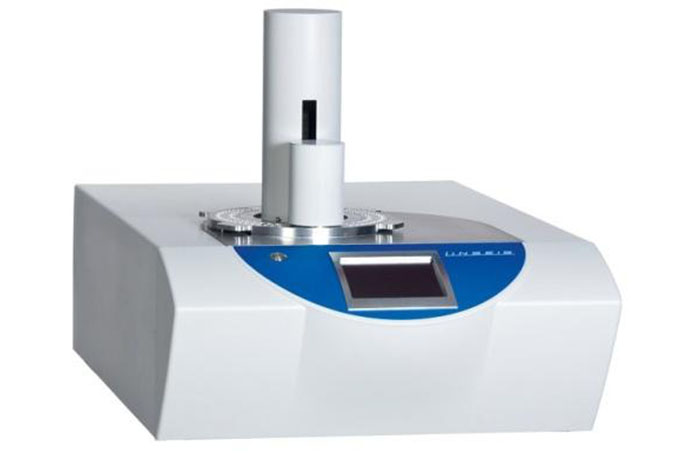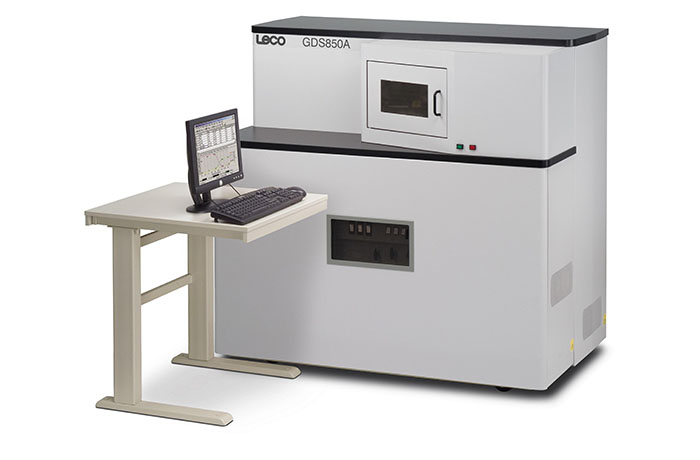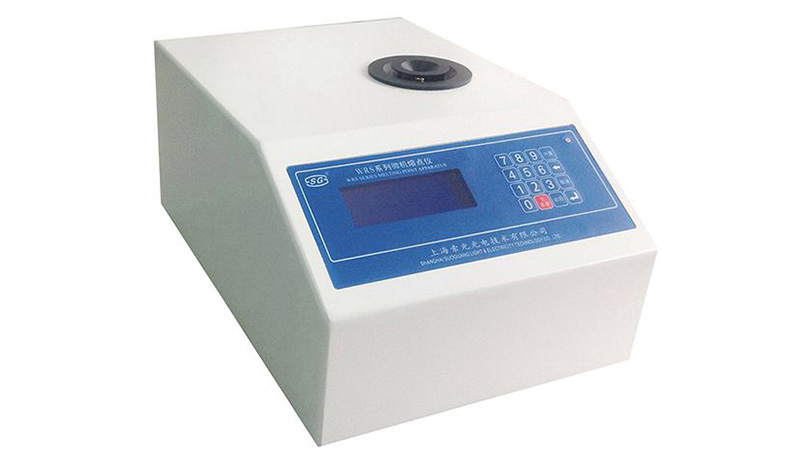What is thermogravimetric analysis?
Thermogravimetric analysis is a type of thermal analysis that evaluates the relationship between the mass of the sample to be tested and the temperature change under program-controlled temperature. It is used to understand the thermal stability and composition of materials. Furthermore, it is used for detection in R&D and quality control. Comprehensive thermal analysis can be achieved by combining thermogravimetric analysis with other methods.
Thermogravimetric analyzer:
A thermogravimetric analyzer employs the thermogravimetric approach to detect the temperature-mass change relationship of substances. Thermogravimetry can be defined as the relationship between the mass of a substance and temperature under programmed temperature control. The quality of a substance is subjected to change in case of sublimation, vaporization, decomposition, or loss of crystal water during the heating process. In this case, the thermogravimetric curve does not display a linear line. Observing the curve can help determine how many degrees the measured substance changes.
Additionally, the instrument is used extensively in research and development, process optimization, and quality monitoring in various fields. It determines the thermal and oxidative stability of materials in different atmospheres. This and evaluation of physicochemical processes such as decomposition, adsorption, desorption, oxidation, reduction, etc., can also be done quickly.
Principle:
A thermogravimetric analyzer consists of the following parts:
- Balance
- Furnace
- Program-temperature control system
- Recording system.
Displacement and the zero-position methods are the most commonly used measurement principles. The displacement method is established on the proportional relationship between the inclination of the balance beam and the change in mass. The differential transformer can detect and record the inclination. The zero-position method employs the differential transformer and optical method to determine the inclination of the balance beam. Later, the current of the coil present in the balance system is adjusted. The magnetic field enables the coil to rotate to restore the inclination of the beam. The force exerted by coil rotation is proportional to the change in mass, and the mass change curve can be obtained by measuring and recording the change in current.
Static and dynamic methods are available. The static method is concerned with the isobaric and isothermal mass change measurement. Determination of the relationship between the equilibrium mass and temperature of a substance under a constant volatile partial pressure at a programmed temperature is termed isobaric mass change determination. In contrast, isothermal mass change measurement refers to measuring the relationship between the mass and temperature of a substance under constant temperature conditions.
The dynamic method is known as thermogravimetric analysis or micro-commercial thermogravimetric analysis. The first derivative of the thermogravimetric curve to temperature (or time) is derivative thermogravimetric analysis. Plotting the substance’s mass change rate (dm/dt) against the temperature T yields the DTG curve (or time t).
Thermogravimetric analysis of rubber components:
The thermogravimetric analysis spectrum displays two curves, out of which the TG curve is one. The curve exhibits a downward trend due to the change of mass. The TG curve in this illustration contains five steps. The first stage is conducted at 20 °C in a nitrogen environment. The temperature climbs to 550°C per minute, which is represented by the blue curve and is maintained at 550°C for 5 minutes, represented by the green curve. The pink portion of the curve denotes the fifth stage, which involves holding the temperature at 700 °C for 5 minutes after reaching 700 °C at a rate of 20 °C/min during the fourth stage. The composition of various materials in rubber can be distinguished based on the curve. Compounding agent is present in the portion below 300 °C in a 4.54 percent concentration, rubber is present at 64.82 percent, carbon black is present at 27.14 percent, and ash is present at 3.02 percent. The DTG curve, which is generated by derivation from the TG curve, is the second curve. The DTG curve reveals that at about 400, the polymer chain begins to react strongly, and the quality rapidly declines. This sample includes a mixture of butadiene rubber and natural rubber, as well as two other types of high polymers.
How to ensure the measurement accuracy of the thermogravimetric analyzer?
The measurement sample should be placed in the middle of the crucible;
The sample should be carefully placed in the middle of the crucible. When the temperature calibration is done, it’s essential to monitor the magnet placement as it should be close to the furnace but not touching it. The recommended gas flow rate is 60mL/min when the temperature is below 800°C and when it exceeds 800°C, the gas flow rate should be 100mL/min.
Temperature calibration should be done if the temperature is inaccurate of thermocouple moves. Weight calibration is necessary if the instrument is used frequently. The test bench must be kept steady during the experiment. Ceramic crucibles cannot be calibrated.
The sample is usually 10mg in weight. If the temperature exceeds 800 °C, it is reduced to 5–7mg. Soon after, the temperature is reduced to 200 °C; at this point, the furnace can be lowered to boost the cooling rate. However, the furnace cannot be lowered if the temperature exceeds 200 °C. The fast oxidation speed damages the instruments. After each usage, alcohol cotton should be used to wipe the crucible and the hook properly.
What is the difference between a comprehensive thermal analyzer and a thermogravimetric analysis?
Comprehensive thermal analyzers can deliver more data to characterize the thermal characteristics of materials. It includes the combination of TG-DTA and TG-DSC. General mineral identification, determination of the fire system of the products, measurement of thermodynamic parameters, crystallinity, quantitative analysis of mineral components, and research on reaction kinetics can be made through it. The thermal analysis technique is based on the physical and chemical processes as the sample material is heated or cooled, along with simultaneous changes in thermal effects and quality.
Differences between the two:
The thermogravimetric analyzer has a high-temperature range compared to the integrated thermal analyzer. The heating rate is also double that of the integrated thermal analyzer. The resolution can reach 0.1 °C. Furthermore, the thermal gravimetric accuracy is 1ug, and differential thermal accuracy is higher than the comprehensive thermal analyzer. It is not essential to continually configure the differential control unit for the analyzer to perform differential analysis on the TG curve. Both analyzers offer experimental conditions under various atmospheres, but the thermogravimetric analyzer can provide a vacuum interface.
The computer automatically adjusts the thermal gravimetric analyzer, which is more user- and control-friendly, whereas the integrated thermal analyzer must be manually adjusted.
The thermogravimetric analyzer has three parts:
- Host.
- Data acquisition control system.
- Atmosphere control system.
The instrument has no manual adjustment, and the computer completes the acquisition control.
The comprehensive thermal analyzer consists of:
- Thermal balance host.
- Microcomputer temperature control unit.
- Balance amplification unit.
- Differential unit.
- Differential thermal amplification unit.
- Interface unit,
- An atmosphere control unit, etc.
There are 4 control boxes in total. Range setting and heating furnace control need to be done manually. The instrument cannot operate automatically, and there is only a minimal amount of automation.
What is the effect of too fast or too slow heating rate on the experiment in thermogravimetric analysis?
The heating rate is an important factor in the thermogravimetric analysis curve. The degree of temperature hysteresis measured depends upon the heating rate; the higher the rate, the more serious the measurement. Similarly, high measured values of the initial and final weight loss temperature indicate a high decomposition temperature range. Samples less sensitive to decomposition display inaccurate weight loss steps if the heating rate is high or enough time is not given to the sample to respond appropriately for TG testing. The slow heating rate makes the temperature record in thermogravimetric analysis highly accurate. The weight-loss stage will eventually passivate due to chemical reactions or physical changes, impacting how much weight loss is read during analysis.
What is the difference between DSC and DTA in thermogravimetric analysis?
Differential Scanning Calorimetry is a method for determining energy difference input to a sample and a reference as a function of t temperature or time at a programmed temperature. Using heat flow rate as the ordinate and temperature or time as the abscissa, a DSC curve is a plot recorded in a differential scanning calorimetry measurement. The approach is identical to differential thermal analysis, i.e., the occurrence of physical and chemical changes in the heating process, accompanied by endothermic and exothermic phenomena. As a result, the differential thermal curve and the differential scanning calorimetry curve have the same morphological appearance.
Differential Thermal Analysis can be defined as a method for measuring temperature difference and the relationship between a substance and its reference at a programmed temperature. Substances are bound to undergo physical and chemical changes of different nature, i.e., crystal transformation, boiling, decomposition, disassociation, glass transition, etc. Certain physical properties like specific heat capacity might change, but the mass of the material may or may not remain constant, but the temperature will variate. Differential thermal analysis is a technique established based on such properties of matter.




